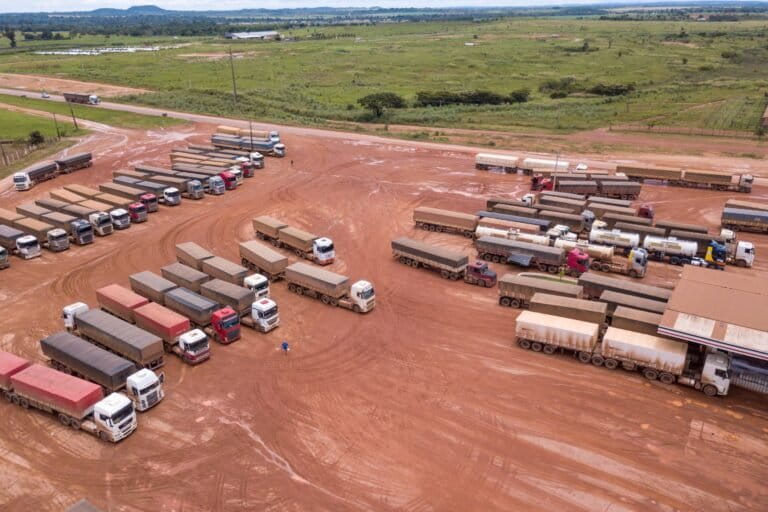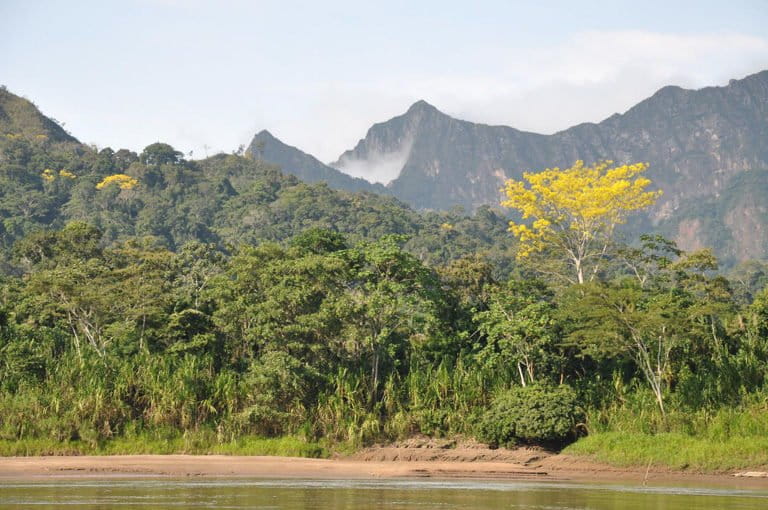The modification of the rivers in Brazil has been driven by energy development, but investment in dams has the potential of creating an economically attractive option for shipping Brazil’s farm…
In Ecuador’s Jama-Coaque Reserve (JCR), nearly every surface is encased with life: moss, ferns, epiphytes and orchids — a kaleidoscope of green in three dimensions. Amid the green, chestnut-headed oropendola…
More than 2,800 kilometers (1,740 miles) of pipelines run through the Amazon and along the coasts of Peru, Bolivia, Ecuador and Colombia. These hundreds of pipelines transport millions of liters…
The past two decades saw a massive increase in hydropower across the Pan Amazon. The Brazilian government has scaled back investment in mega-scale hydropower projects but continues to pursue development…
The recent history of hydropower in Ecuador is similar to that described for Bolivia and Peru, particularly with respect to its recent expansion and the predominance of D&T systems that…
Peru has enjoyed historic levels of economic growth for more than two decades, mostly due to the expansion of the minerals sector, which is a large consumer of electrical energy.…
Bolivia’s hydropower is based on medium-scale facilities located in a geographical region optimally suited for dam and tunnel (D&T) systems. The oldest of these is in the Zongo Valley, which…
In 2010, Electronorte initiated the construction of a high-tension (500 kW) transmission line to connect the power plants at Tucuruí and Belo Monte; this line was extended north to the…
The Tapajós is a clear-water river and the fifth largest tributary of the Amazon; it drops in elevation from about 800 meters above sea level in the highlands of central…
The most controversial hydropower project in the Pan Amazon is the complex on the Rio Xingu near the city of Altamira (Pará). The proposal to build a dam on the…
Yesterday, Ecuador voted to halt all future oil drilling in a sensitive protected area known for its fragile rainforest ecosystem and isolated Indigenous communities. Millions of people participated in a…
Tomorrow, Ecuadorians will cast their votes in a referendum to decide whether oil drilling should continue in Yasuní National Park, a rainforest reserve located in one of the most biologically…
The Rio Madeira was the next Amazonian tributary to attract the attention of Brazil’s hydropower developers. The river is free of rapids as it flows along the western edge of…
The oldest hydropower facility in the Brazilian Amazon is the Tucuruí D&R complex (8.4 GW) on the lower Tocantins River, about 200 kilometers south of its confluence with the Amazon…
QUITO, Ecuador — Ecuadorians have been given a chance to vote on whether or not they want oil drilling to continue in Yasuní National Park, deep in the northern Amazon…
The largest hydropower complex in Venezuela is the oldest and least sustainable facility in the Pan Amazon. The complex of dams on the Rio Caroni is operated by Electrificación del…
Think of any place in the Amazon and imagine an oil well installed there. Then, imagine that after decades of extracting crude oil, the company ends its operations and leaves.…
After highways, investments in large-scale hydropower facilities are the most controversial infrastructure investments in the Pan Amazon. Governments pursue hydropower as a sovereign source of renewable energy and driver of…
In the Ecuadorian Amazon, a region marked by half a century of extractive industries, mainly oil, deforestation is a constant. In recent years, a new threat to the conservation of…
Justin Stewart left for Mount Chimborazo in August 2022 to collect fungal samples from the Ecuadoran volcano at an elevation of 4,000 meters, or about 13,000 feet. Given that vegetation…
Roads are scarce in the Northern Amazon, and surprisingly, the few that exist have not triggered widespread deforestation. This apparent anomaly is largely the consequence of a development dynamic that…
The Tsáchila Indigenous communities of the province of Santo Domingo de los Tsáchilas, Ecuador, have spent more than two decades speaking out against the air and water pollution caused by…
Although never organized as a specific project, the Carretera Marginal de la Selva has emerged from multiple projects that have been established in the Andean foothills from Colombia to Bolivia.…
Decades of oil spills have polluted rivers and streams throughout the Amazon Rainforest, affecting wildlife and destroying the homes of Indigenous peoples. But the oil and gas industry doesn’t act…
Bolivia, Peru, Ecuador, and Colombia all invested in major highway building initiatives in the last half of the twentieth century, motivated in part to project sovereignty over their Amazonian provinces.…
The Southern Amazon has experienced massive deforestation, coupled with the degradation of soil and water resources. The forest frontiers at the remote corners of the Brazilian highway system have remained…
It all starts with a road. In Brazil, the federal government commissioned the construction of mule trails and telegraph lines to link their coastal cities with long-established settlements on remote…
The Merriam-Webster dictionary defines infrastructure as the ‘underlying structure’ of a country – specifically, the physical installations needed to ensure that its economy functions for the benefit of society. Modern…
The Amazon Rainforest is the largest in the world and a key player in regulating global water and carbon cycles. It also happens to be home to sophisticated criminal networks…
The consensus strategy for saving the Amazon is based on a set of five self-reinforcing policies: (1) create protected areas and recognize Indigenous reserves; (2) improve governance to combat illegal…



























































